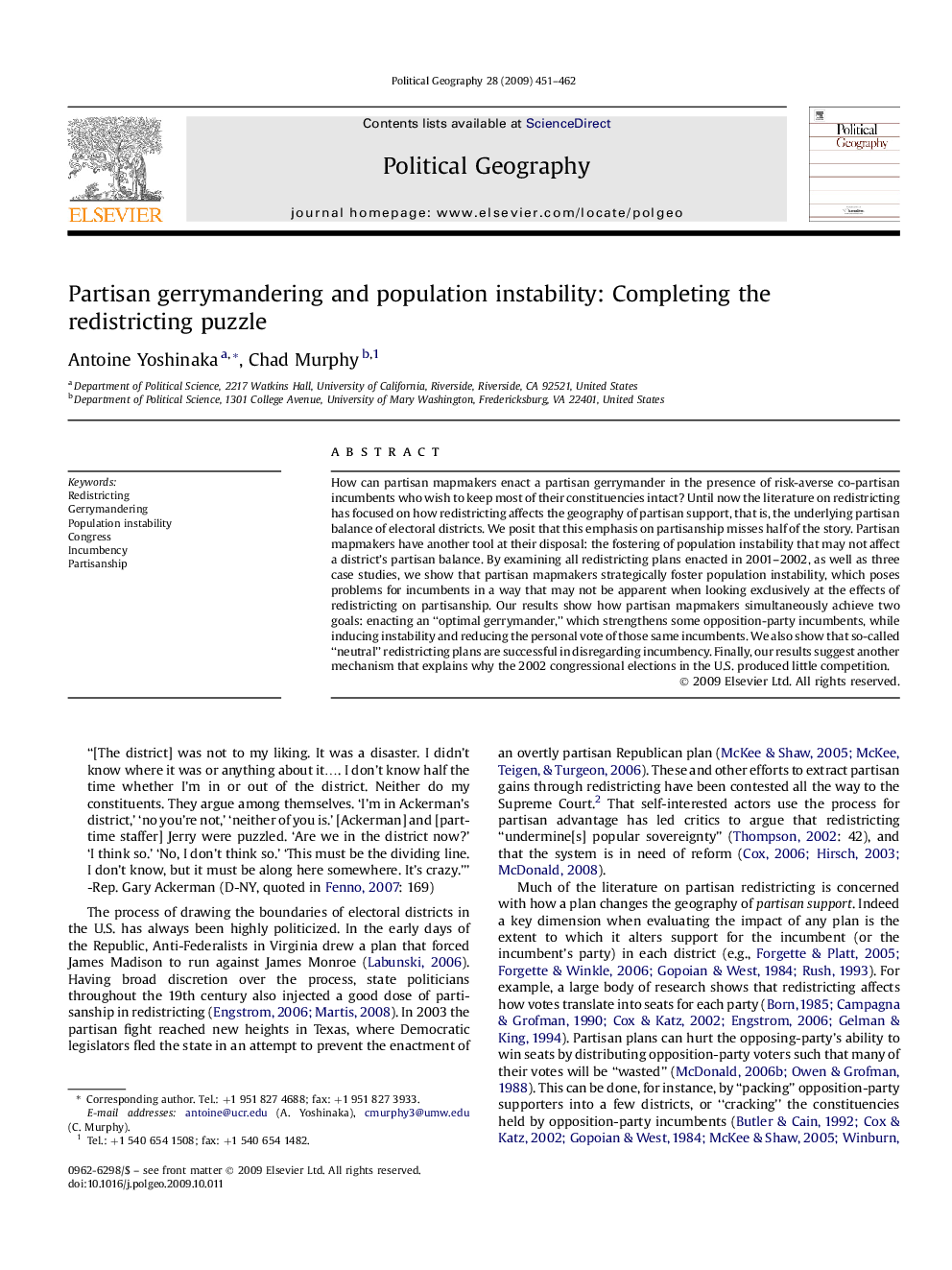| کد مقاله | کد نشریه | سال انتشار | مقاله انگلیسی | نسخه تمام متن |
|---|---|---|---|---|
| 1062153 | 947939 | 2009 | 12 صفحه PDF | دانلود رایگان |

How can partisan mapmakers enact a partisan gerrymander in the presence of risk-averse co-partisan incumbents who wish to keep most of their constituencies intact? Until now the literature on redistricting has focused on how redistricting affects the geography of partisan support, that is, the underlying partisan balance of electoral districts. We posit that this emphasis on partisanship misses half of the story. Partisan mapmakers have another tool at their disposal: the fostering of population instability that may not affect a district's partisan balance. By examining all redistricting plans enacted in 2001–2002, as well as three case studies, we show that partisan mapmakers strategically foster population instability, which poses problems for incumbents in a way that may not be apparent when looking exclusively at the effects of redistricting on partisanship. Our results show how partisan mapmakers simultaneously achieve two goals: enacting an “optimal gerrymander,” which strengthens some opposition-party incumbents, while inducing instability and reducing the personal vote of those same incumbents. We also show that so-called “neutral” redistricting plans are successful in disregarding incumbency. Finally, our results suggest another mechanism that explains why the 2002 congressional elections in the U.S. produced little competition.
Journal: Political Geography - Volume 28, Issue 8, November 2009, Pages 451–462